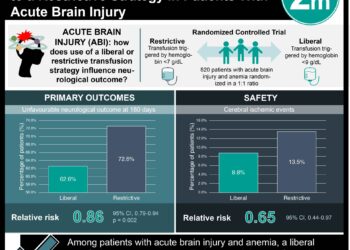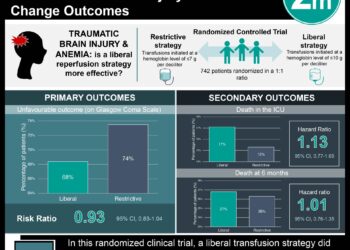Despite safety standards, playground-related injury remains a concern
1. Approximately 10% of children ages ≤14 years seen in an emergency department (ED) from 2001 to 2013 for playground-related injuries were diagnosed with a traumatic brain injury (TBI).
2. From 2005 to 2013, there was a statistically significant increase in TBI-related ED visits among children under 14 years old.
Study Rundown: TBI sustained in childhood, even if considered mild, can have far reaching long-term physical, cognitive, and behavioral consequences. In 1999, the American Society for Testing and Materials (ASTM) established safety standards for playgrounds in order to decrease the risk of serious injury children sustain while utilizing recreational parks and playgrounds. This study is the first to analyze trends in TBIs since the launch of these guidelines. Using nationally representative data for ED visits among pediatric patients, the authors specifically analyzed TBI injuries related to playground use. Overall, close to 10% of all ED visits of children ≤14 years and under related to playground injuries were TBIs. Over half occurred in boys, while another half occurred in children ages 5 to 9 years. The most commonly implicated equipment included monkey bars and swings. Most visits occurred during the months of April, May, and September. Finally, there was a statistically significant increase in the rate of playground-related TBIs from 2005 to 2013. Though clinically significant, these data are limited by likely underreporting of TBIs due to a low sensitivity of TBI definition by the database and exclusion of secondary diagnosis of TBI in the data analysis. Nonetheless, these findings highlight the need for improved safety measures in playgrounds, as well as the importance of safety education for parents and children.
Click to read the study, published today in Pediatrics
Relevant Reading: Behavior problems in school and their educational correlates among children with traumatic brain injury
Study Author, Tabitha Cheng, MD, talks to 2 Minute Medicine: The CDC Experience Applied Epidemiology Fellowship, National Center for Injury Prevention and Control, Division of Scientific Education and Professional Development, Division of Unintentional Injury Prevention
“Many medical students, residents, and fellows treat pediatric patients for playground-related injuries, and as medical professionals, we are often asked to give advice to parents or guardians on how to prevent these type of injuries. Additional studies are needed to determine what specific risk behaviors lead to traumatic brain injuries on the playground or why emergency department visits have increased. Some advice that you can give to parents or guardians include:
- Check that playgrounds have soft material under them such as wood chips, sand, or mulch.
- Read playground signs and use playground equipment that is right for your child’s age.
- Make sure there are guardrails in good condition to help prevent falls.
- Look out for things in the play area that can trip your child, like tree stumps or rocks.
Additional safety tips and information about traumatic brain injuries can be found at http://www.cdc.gov/headsup/index.html”
In-Depth [cross-sectional study]: This study included data from the National Electronic Injury Surveillance System- All Injury Prevention (NEISS-AIP) database from January 1, 2001 through December 31, 2013. All ED visits for playground-related TBI of children ≤14 years old were included in the analysis. Of all playground-related ED visits, 9.8% were related to a primary diagnosis of TBI. Boys accounted for 58.6% of these TBIs, and 5 to 9 year olds made up 50.6% of cases. Monkey bars were implicated in 28.3% of the injuries, while 28.1% of injuries were related to swings. Specifically, swings accounted for 31%, 24%, and 34% of injuries among children ages 0 to 4 years, 5 to 9 years, and 10 to 14 years, respectively. The month of May had the highest rate of playground-related TBIs (12.9%), with September (11.8%) and April (11.7%) following closely behind. When analyzed over time, playground-related TBI injury rates had a statistically significant increase from 2005 to 2013 (slope = 3.7, P < .05).
Image: PD
©2015 2 Minute Medicine, Inc. All rights reserved. No works may be reproduced without expressed written consent from 2 Minute Medicine, Inc. Inquire about licensing here. No article should be construed as medical advice and is not intended as such by the authors or by 2 Minute Medicine, Inc.







